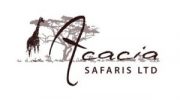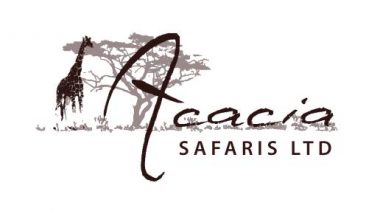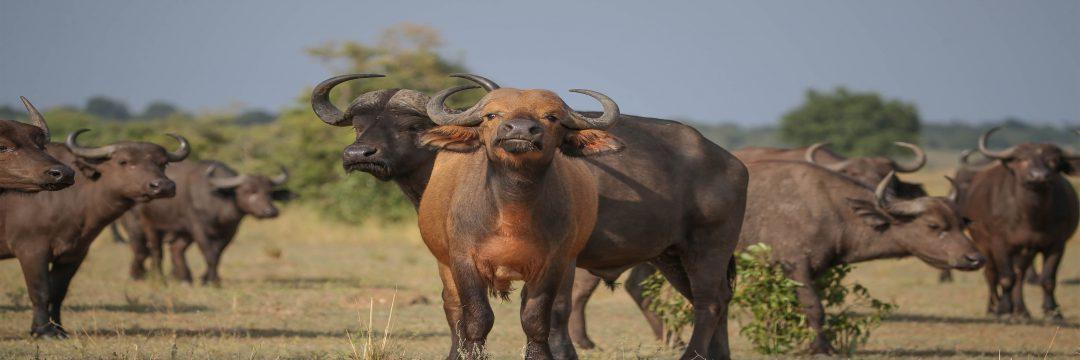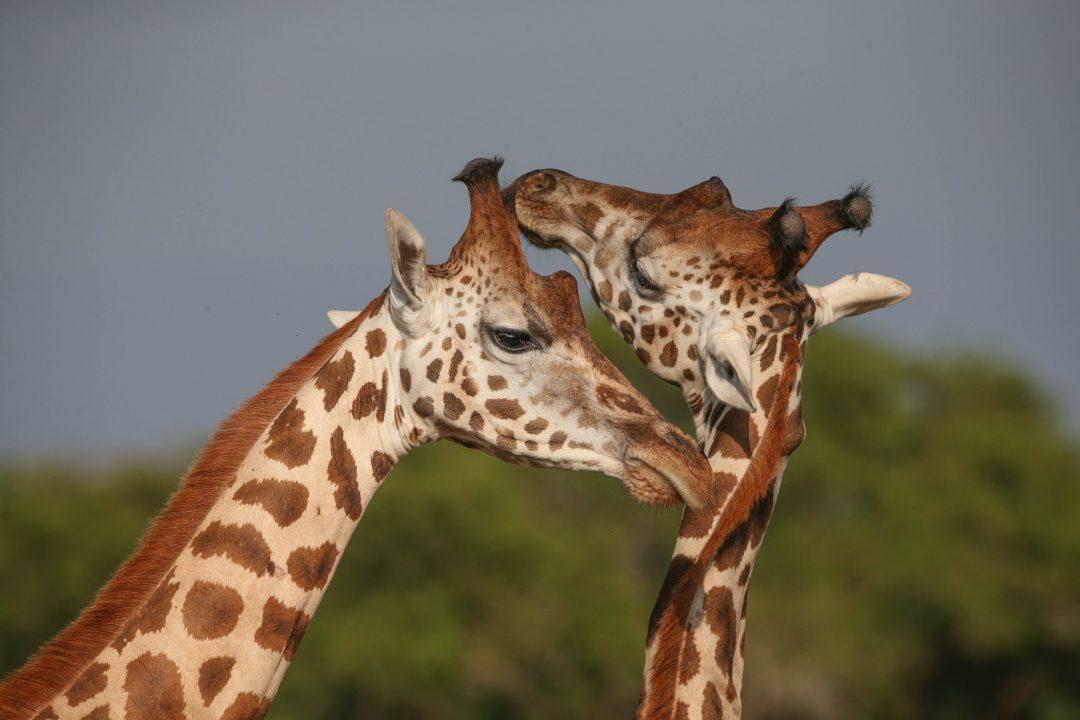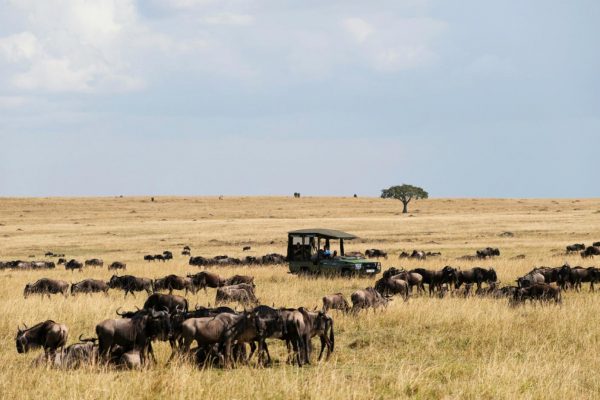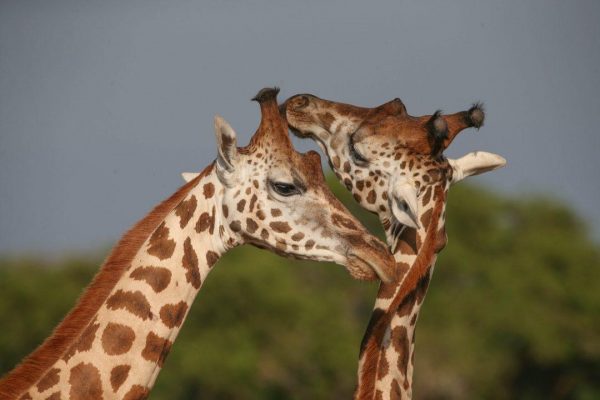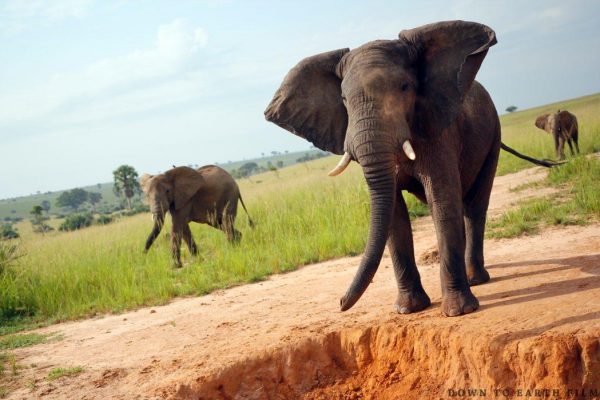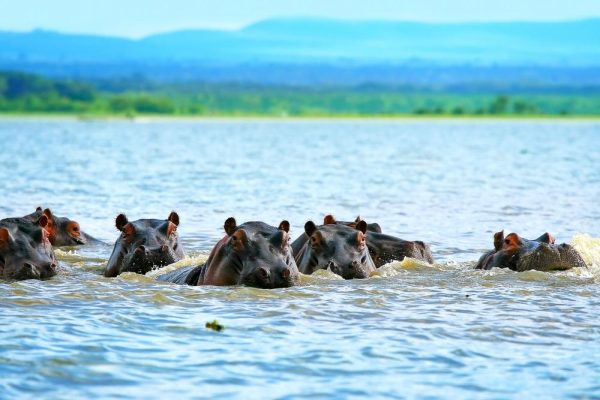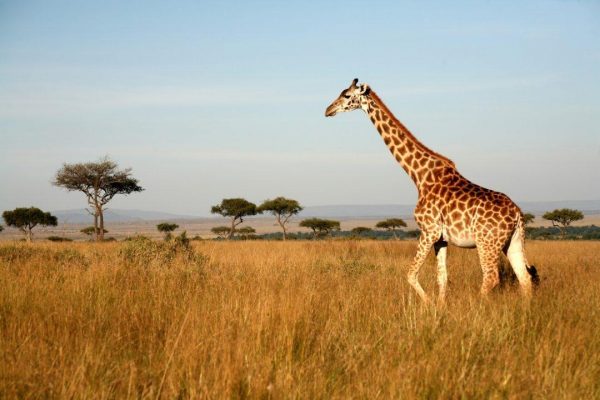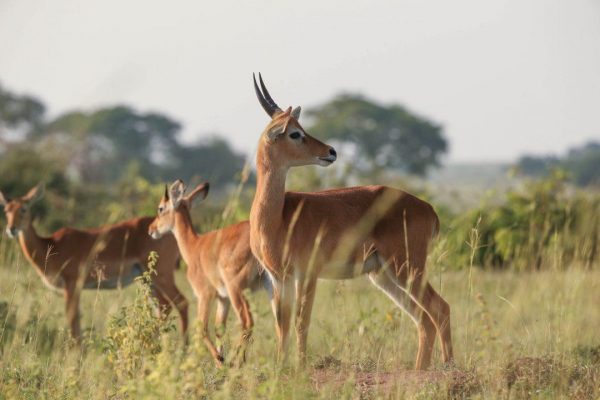Ngorongoro Crater Conservation Area
Visit Ngorongoro Crater Conservation Area for the best Tanzania Safari where you adventure a large number of wildebeests in Serengeti national park
The area is located between the Serengeti and Lake Manyara. The area covers about 8.300 km including Olduvai Gorge, Lake Ndutu, and Masek, and a series of volcanoes most of which are inactive.
It is home to the famous volcanic Ngorongoro crater which is the largest unbroken caldera in the world. The crater, 610 meters deep and 260 km is a microcosm of East African scenery and game and is usually visited on the way back from the Serengeti to Arusha.
Scenic grandeur and stunning views are the hallmarks of this wonder of the world. Lake Natron is an alkaline lake known for the high population of flamingoes that gather here at the end of the rain season.
Species to Adventure while on Ngorongoro Crater Conservation Area Safari:
Ngorongoro enjoys an incredible variety of animals and vegetation, from grasslands, swamps, forests, saltpans, lakes. There are 25,000 larger animals within the crater itself, mostly Zebra and wildebeest.
However, this is undoubtedly the best place to see black rhino in Tanzania as well as the pride of lions that include the magnificent black-maned males. There are lots of colorful flamingoes and a variety of other water birds around the soda lake on the crater floor.
More than 100 species of birds not found in the Serengeti have been found in the crater. Other game includes leopards, cheetahs, hyenas, elephants, warthogs, impala, buffaloes, hartebeest, eland, reedbuck and Thompson gazelles.
Activities to do while on Ngorongoro Crater Safari:
Most of the activity is within the crater – bird watching, photography, walking safaris, and game viewing. The headquarter is located at Park Village at Ngorongoro Crater, also an information center.
Trekking activities can be arranged to reach the volcanoes of the Crater Highlands from the Ngorongoro Crater (Oldoinyo Lengai, Lemagurut, Oldeani, Empakaai, Olmoti). Archeologists will be interested in Olduvai Gorge, a canyon about 50 km long and up to 90 m deep in the northwest of Ngorongoro.
Here it is possible to see the famous discoveries made in 1959 of remains of early Man by Mary and Louis Leakey, who found the skull known as Australopithecus Boisei, 1.8 million years old. The best time to visit Ngorongoro is the dry season from June to August.
Wildlife to see on a Ngorongoro Crater Safari
Today, Ngorongoro’s caldera harbors the most ravishing wildlife haven on earth. The animals are not confined by the Crater walls, and can leave freely; they stay because conditions are favorable. Since most of the Crater floor is grassland, grazing animals predominate gnu, zebra, gazelles, buffalo, eland and kongoni (Coke’s hartebeest), and warthogs.
The rich pasture and permanent water of the Crater floor support a resident population of some 20,000 to 25,000 large mammals. The swamp and forest provide additional resources for hippos, some of Tanzania’s last remaining black rhinos, waterbucks, giant-tusked elephants, reedbucks and baboons, bushbucks, and vervets. The steep inner slopes provide a habitat for dik-dik and the rare mountain reedbuck.
Towering euphorbias adhere to the crater walls and on the floor. Fever tree and Fig tree forests give shade to an awe-inspiring array of creatures. All these animals, in turn, support large predators such as lions and leopards, and scavengers such as Hyenas and Jackals. For the best viewing and photography, approach the animals slowly and quietly and stay on the official tracks.
Birdlife in Ngorongoro Crater Conservation Area Safari
Birdlife safaris at Ngorongoro depend intensely on the season of the year because there are inhabitant birds and migrant birds. You are certain to see many residents, like ostriches, bustards, and plovers all year round.
In the wet season, they share the Crater with European migrants such as White Storks, swallows, Yellow Wagtails, etc. The migrants pass through from November through May, coinciding with the rains in Africa and the winter in Eurasia.
There are also local migrants such as flamingos, storks, and ducks who come and go depending on the state of the lake and ponds. Other birds you can see are Stonechat, Schalow’s Wheatear, Anteater Chat, Fiscal Shrike.
Augur Buzzards, Verreaux’s Eagle, and other raptors live in the Crater. Ngorongoro Crater safari lodges are established on the rim of the crater, which is 2,235 meters (7,264 feet) above sea level. It can get quite fresh up here, and gets very cold at night in the winter months of June to August, but is opposingly hot down in the crater during the day.
Rainy Season in Ngorongoro Crater Conservation Area Safari
It rains anytime from November to May, with the long rains in April to May. The amount and pattern of rainfall vary and a dry period in January and February may split the rainy season into short and long rains.
The forested eastern slopes get much more rain due to their elevation than the arid country to the west. The rain arrives in stormy showers usually during afternoons and nights, which cleanses the air to reveal clear views. The weather is usually dry from June to November. July is the coldest month and highland temperatures may fall below freezing.
The Ngorongoro Crater Safari Floor
Interpretive game drives through the emerald plains and forests of the crater floor engender guests with a respect for the people and wildlife of this world wonder.
The dominant feature of the crater floor is Lake Magadi, a shallow soda lake that supports large flocks of flamingo. Much of the crater floor is open grassland, making animal spotting relatively easy: black rhino, lion, wildebeest hyena, gazelle, and zebra are all commonly seen.
Lodges and hotels around the Ngorongoro Crater Conservation Area. A sheer dirt road descends from Malanja Depression on the crater rim to the crater floor. At the top of the road, Masai women and children allow you to photograph them for a small fee.
The hippo pool near Mandusi Swamp is a popular picnic spot. The Malanja depression is grassy open and is a good place to spot typical highland antelope such as mountain reedbuck and Kirks, dik-dik, and birds such as the striking augur buzzard and Schalow’s
Popular Tanzania Wildlife Safaris Arranged by Acacia Safaris
8 Day Tanzania Wildlife Safaris; The 8 Day Tanzania Wildlife Safaris will make you to explore The comfortable weather and unparalleled scenic beauty with roads that run through it, littered with campgrounds and lodges, excellent year-round wildlife viewing; flocks of flamingos, silent families of giraffes, noisy packs of wild dogs, lions with no trouble finding lunch; zebras roaming around waiting for sunset. Read More…
11 Day Tanzania Wildlife Tour; The 11 Day Tanzania Wildlife Tour, With your naturalist guide, leave for Tarangire National Park, Tanzania’s third largest National Park and sanctuary to an unusually large elephant population. Majestic baobab trees are an interesting feature of the park that dwarf the animals that feed beneath them. Animals converge along the Tarangire River, Read More…
12 Day Tanzania Cultural & Nature Walk; The 12 Day Tanzania Cultural & Nature Walk Tour, With your naturalist guide, leave for Tarangire National Park, Tanzania’s third largest National Park and sanctuary for an unusually large elephant population. Majestic baobab trees are an interesting feature of the park that dwarf the animals that feed beneath them. Animals converge along the Tarangire River, which provides the only everlasting water supply. Read More…
18 Day Kilimanjaro Hiking Tour Tanzania Zanzibar Adventure safari; The 18 Day Kilimanjaro Hiking Tour Tanzania Zanzibar Adventure safari will make you explore the Best of Tanzania safari includes all of the major highlights of Tanzania – from climbing Mt. Kilimanjaro to a Lodge Safari in the Ngorongoro Crater, Serengeti and Lake Manyara. From here you proceed to relaxing on the white sandy Indian Ocean beaches of Zanzibar. You will not regret your Safari. Read More…
Most Visited Tanzania Safari Tour Destinations / Where to go for a Tanzania Wildlife Safari
SERENGETI NATIONAL PARK TANZANIA; Serengeti National Park with 14,763 sq km is the largest Tanzanian park, contiguous with Kenyan Masai Mara and extending almost to Lake Victoria. Read More…
LAKE MANYARA NATIONAL PARK TANZANIA; Lake Manyara National park is one of the most popular Tanzanian parks along the Northern circuit. It is located on the ridge of the Rift Valley, with the escarpment in the western border of the park. Read More…
TARANGIRE NATIONAL PARK TANZANIA; Tarangire National Park is located along the Tarangire river, to the south of Lake Manyara. During the dry season, from August to October,Tarangire has one of the highest concentration of wildlife than any other African national park. Read More…
MOUNT KILIMANJARO TANZANIA; Kilimanjaro is a giant volcano reaching an elevation of 5,895 m with Uhuru Peak. Other names for this volcano are: Kilima Dscharo, Oldoinyo Oibor (white mountain in Masai) and Kilima Njaro meaning shining mountain in Swahili. Read More…
RUBONDO ISLANDS; Visit the Rubondo Island National Park for nature walking, relaxing, fishing, boat Excursions, Bird Watching, name it. Tanzania’s tenth National Park and the only one in Lake Victoria, Rubondo Island is located in the southwest of Lake Victoria on a 240 sq. km island. Read More…
